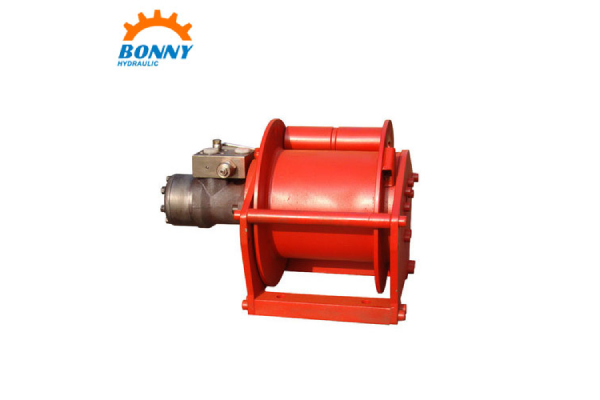 English
English Español
Español  Português
Português  русский
русский  Français
Français  日本語
日本語  Deutsch
Deutsch  tiếng Việt
tiếng Việt  Italiano
Italiano  Nederlands
Nederlands  ภาษาไทย
ภาษาไทย  Polski
Polski  한국어
한국어  Svenska
Svenska  magyar
magyar  Malay
Malay  বাংলা ভাষার
বাংলা ভাষার  Dansk
Dansk  Suomi
Suomi  हिन्दी
हिन्दी  Pilipino
Pilipino  Türkçe
Türkçe  Gaeilge
Gaeilge  العربية
العربية  Indonesia
Indonesia  Norsk
Norsk  تمل
تمل  český
český  ελληνικά
ελληνικά  український
український  Javanese
Javanese  فارسی
فارسی  தமிழ்
தமிழ்  తెలుగు
తెలుగు  नेपाली
नेपाली  Burmese
Burmese  български
български  ລາວ
ລາວ  Latine
Latine  Қазақша
Қазақша  Euskal
Euskal  Azərbaycan
Azərbaycan  Slovenský jazyk
Slovenský jazyk  Македонски
Македонски  Lietuvos
Lietuvos  Eesti Keel
Eesti Keel  Română
Română  Slovenski
Slovenski  मराठी
मराठी  Srpski језик
Srpski језик
Working principle of hydraulic winch
2021-06-11
1. Power part-converts the mechanical energy of the prime mover into the pressure energy of the oil (hydraulic energy), for example: hydraulic pump.
2. Execution part-convert the oil pressure energy input by the hydraulic pump into mechanical energy that drives the working mechanism. For example: hydraulic cylinders, Hydraulic Motor.
3. Control part-used to control and adjust the pressure, flow and flow direction of the oil, such as: pressure control valve, flow control valve and direction control valve.
2. Execution part-convert the oil pressure energy input by the hydraulic pump into mechanical energy that drives the working mechanism. For example: hydraulic cylinders, Hydraulic Motor.
3. Control part-used to control and adjust the pressure, flow and flow direction of the oil, such as: pressure control valve, flow control valve and direction control valve.
4. Auxiliary part-connect the first three parts together to form a system, which plays the role of oil storage, filtration, measurement and sealing. For example: pipelines and joints, fuel tanks, filters, accumulators, seals and control instruments, etc.

Previous:Definition of hydraulic motor
X
We use cookies to offer you a better browsing experience, analyze site traffic and personalize content. By using this site, you agree to our use of cookies.
Privacy Policy






